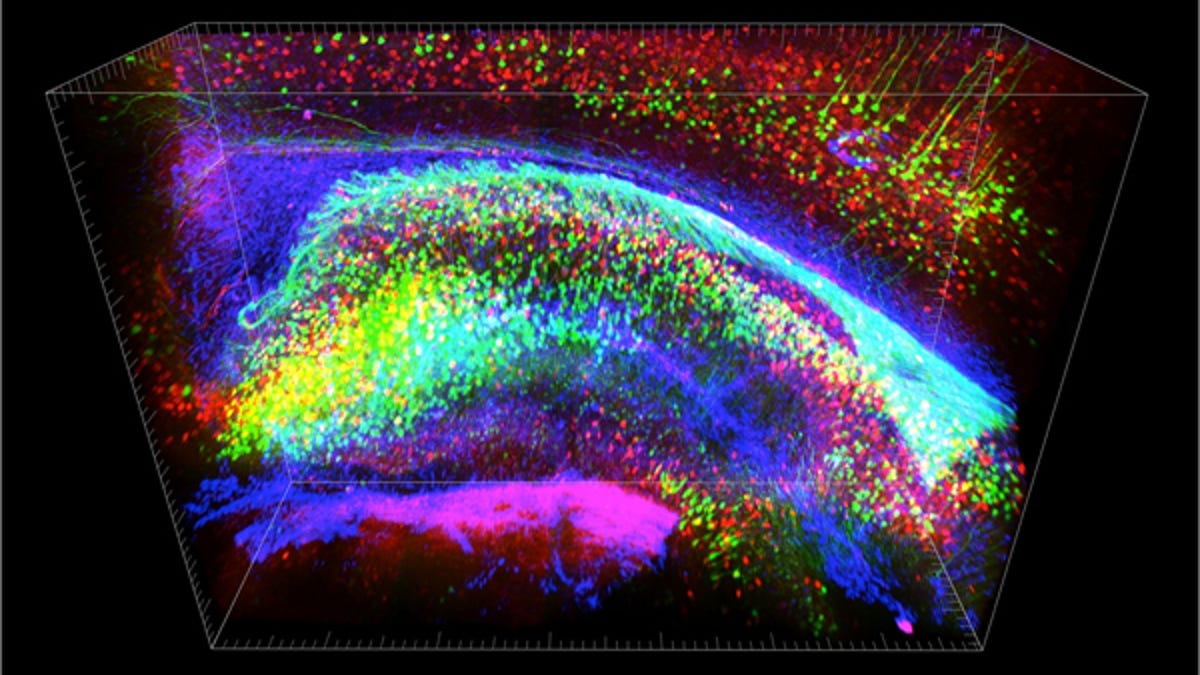See-through brain lets scientists see the connections
Scientists at Stanford University have discovered a way to make the brain completely transparent so they can study its structure.

Neurons in an intact mouse hippocampus visualized using CLARITY and fluorescent labelling.
(Credit: Karl Deisseroth and Kwanghun Chung)
Scientists at Stanford University have discovered a way to make the brain completely transparent so they can study its structure.
Studying the brain can be a tricky business. The interesting stuff, such as neurons and how they communicate, is obscured by things like fatty tissue. Usually, scientists just cut it up into paper-thin slices to study, like withEinstein's brain — but a team of scientists at Stanford University, led by Karl Deisseroth and Kwanghun Chung, have found what the director of the US National Institute of Mental Health Thomas Insel has called "one of the most important advances for doing neuroanatomy in decades".
The new technique allows researchers to leave the brain intact, which puts an end to the damage that slicing can cause. It involves infusing the brain with acrylamide, which binds the proteins; once heated, it polymerises, preserving the important molecules. Then, the brain is rinsed with sodium dodecyl sulfate (SDS) detergent, which strips the fatty lipids, leaving intact the proteins that the researchers wish to study.
Called Clear, Lipid-exchanged, Anatomically Rigid, Imaging/Immunostaining compatible, Tissue hYdrogel (CLARITY), this technique leaves behind an almost perfect model of the brain's pathways, ripe for fluorescent labelling. Using CLARITY on a mouse brain, the team was able to view fluorescently labelled neurons from the outer layers of the cortex right to the inner structures. They also traced individual nerve fibres through half-centimetre-thick slices of a human brain that had been preserved in formalin.
CLARITY can be used to study the brain more deeply than we ever have — for example, comparing the brain of a subject with a neurological disease to a healthy control brain, a study that is impossible on living subjects.
You can find the full study, "Structural and molecular interrogation of intact biological systems", on Nature.com, and watch a video about how CLARITY works below.
Via www.nature.com

